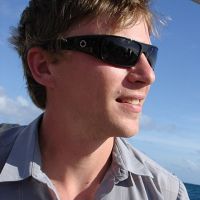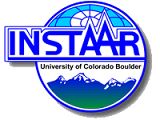Post-doctoral researcher Adrian Harpold funded to accomplish cross-CZO science
11 Jan 2013
News Source: CZO
Harpold awarded an NSF Earth Sciences Postdoctoral Fellowship for a research and education program that spans 3 western Critical Zone Observatories
Dr. Adrian Harpold has been awarded an NSF Earth Sciences Postdoctoral Fellowship to develop a research and education program with the Institute of Arctic and Alpine Research (INSTAAR) at the University of Colorado and the National Center for Atmospheric Research (NCAR) in Boulder, Colorado. He will investigate how forest structure controls the distribution of snowpacks and hydrologic fluxes across gradients of elevation, topography, and climate. Dr. Harpold will first quantify snow-vegetation interactions using high resolution Light Detection and Ranging (LiDAR) derived vegetation, terrain, and snowpack information at three Critical Zone Observatories (CZO) in seasonally snow-covered forests in California, Colorado, and New Mexico. This high-resolution data will also be used to inform and evaluate a land surface model, the NCAR-developed Community Land Model (CLM), in highly instrumented stands and catchments. The overall goal of this study is to improve the predictions of water and energy fluxes in topographically complex, forested landscapes across the Western U.S.
Seasonal mountain snowpacks are the major source of water for human and natural systems in the semi-arid Western U.S. The interactions between vegetation and climate play a central role in the accumulation, ablation (evaporation, sublimation, and melt), and ultimate partitioning of snowpacks to the atmosphere versus soils and runoff. Seasonal snowpacks are difficult to measure and model in complex forested terrain, however, which compromises our ability to reliably predict weather, climate, and water resources. Improving how vegetation structure is represented in land surface models is timely, as evidence suggests massive changes in vegetation structure due to tree-die off and earlier snowmelts from warming temperatures will alter snow-vegetation interactions in western North American forests. Dr. Harpold will develop a series of lectures on assimilating LiDAR information into snowpack models for a course at the University of Colorado, as well as design and run a short-course on LiDAR analysis targeted to young earth scientists.
Link to Harpold INSTAAR website:
http://instaar.colorado.edu/people/adrian-harpold/
News Category:
RESEARCH |
PEOPLE |
AWARD |
EDUCATION/OUTREACH
Files
Harpold research questions
(498 KB pptx)
Powerpoint file - research questions associated with improving snow-vegetation interactions in Land Surface Models
People Involved
CZO
-
Boulder, Catalina-Jemez, INVESTIGATOR
-
Boulder, Sierra, INVESTIGATOR
Discipline Tags and CZOs
Hydrology
Climatology / Meteorology
Biology / Ecology
National
Boulder
Catalina-Jemez
Sierra
Explore Further






